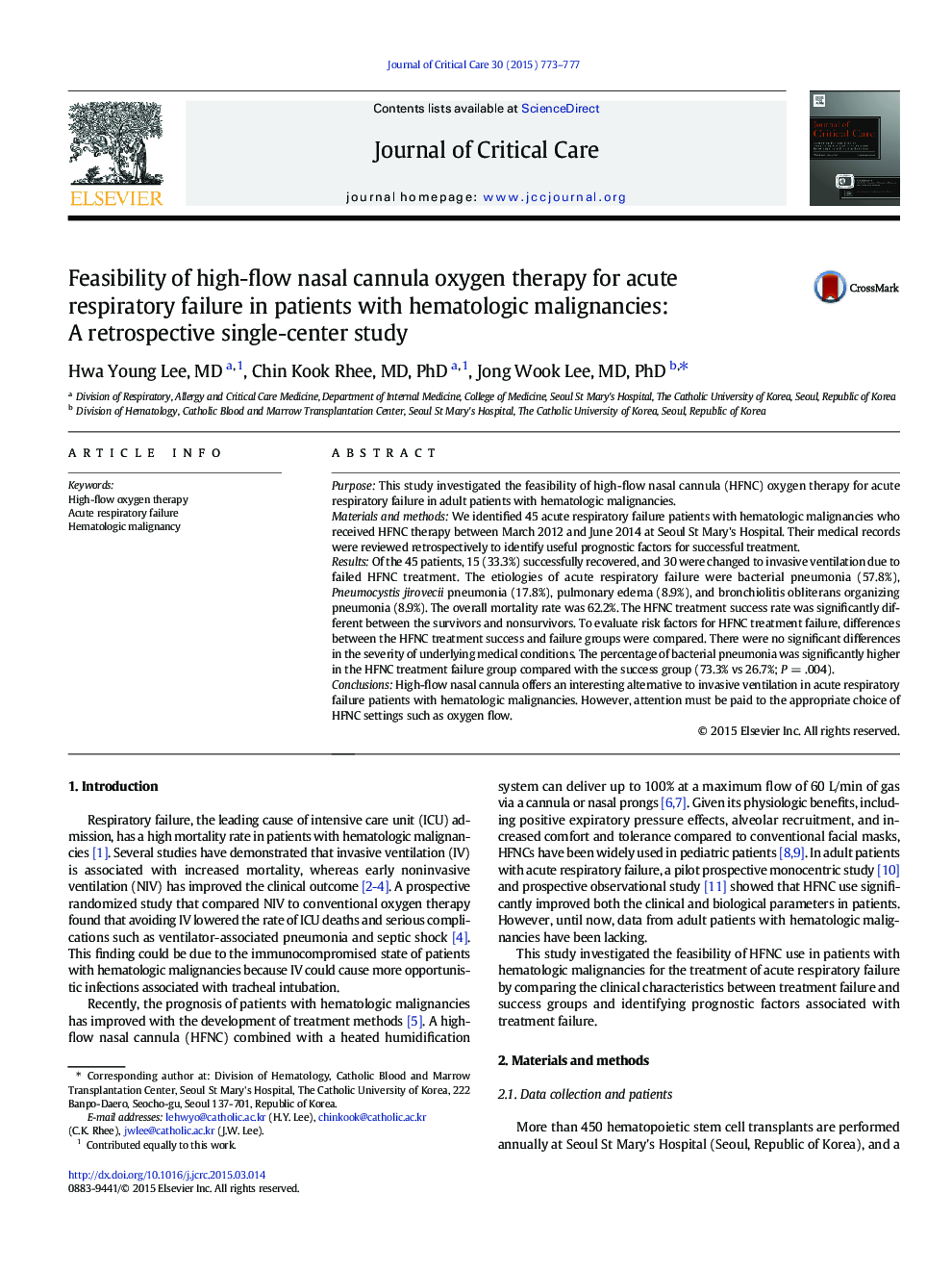| Article ID | Journal | Published Year | Pages | File Type |
|---|---|---|---|---|
| 2764531 | Journal of Critical Care | 2015 | 5 Pages |
PurposeThis study investigated the feasibility of high-flow nasal cannula (HFNC) oxygen therapy for acute respiratory failure in adult patients with hematologic malignancies.Materials and methodsWe identified 45 acute respiratory failure patients with hematologic malignancies who received HFNC therapy between March 2012 and June 2014 at Seoul St Mary's Hospital. Their medical records were reviewed retrospectively to identify useful prognostic factors for successful treatment.ResultsOf the 45 patients, 15 (33.3%) successfully recovered, and 30 were changed to invasive ventilation due to failed HFNC treatment. The etiologies of acute respiratory failure were bacterial pneumonia (57.8%), Pneumocystis jirovecii pneumonia (17.8%), pulmonary edema (8.9%), and bronchiolitis obliterans organizing pneumonia (8.9%). The overall mortality rate was 62.2%. The HFNC treatment success rate was significantly different between the survivors and nonsurvivors. To evaluate risk factors for HFNC treatment failure, differences between the HFNC treatment success and failure groups were compared. There were no significant differences in the severity of underlying medical conditions. The percentage of bacterial pneumonia was significantly higher in the HFNC treatment failure group compared with the success group (73.3% vs 26.7%; P = .004).ConclusionsHigh-flow nasal cannula offers an interesting alternative to invasive ventilation in acute respiratory failure patients with hematologic malignancies. However, attention must be paid to the appropriate choice of HFNC settings such as oxygen flow.
